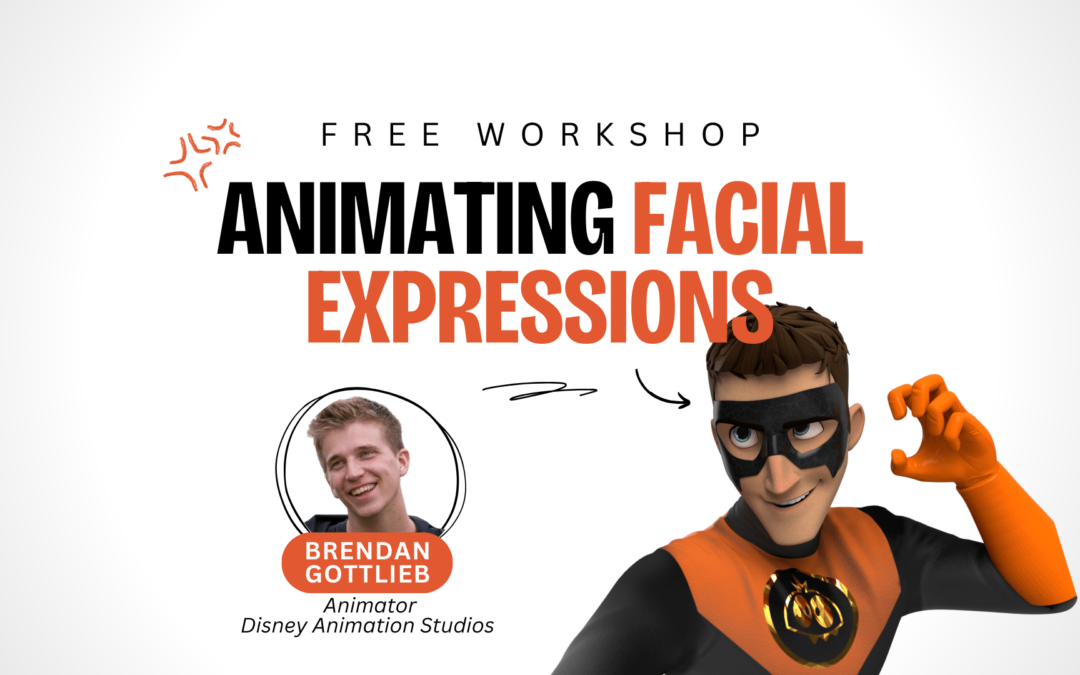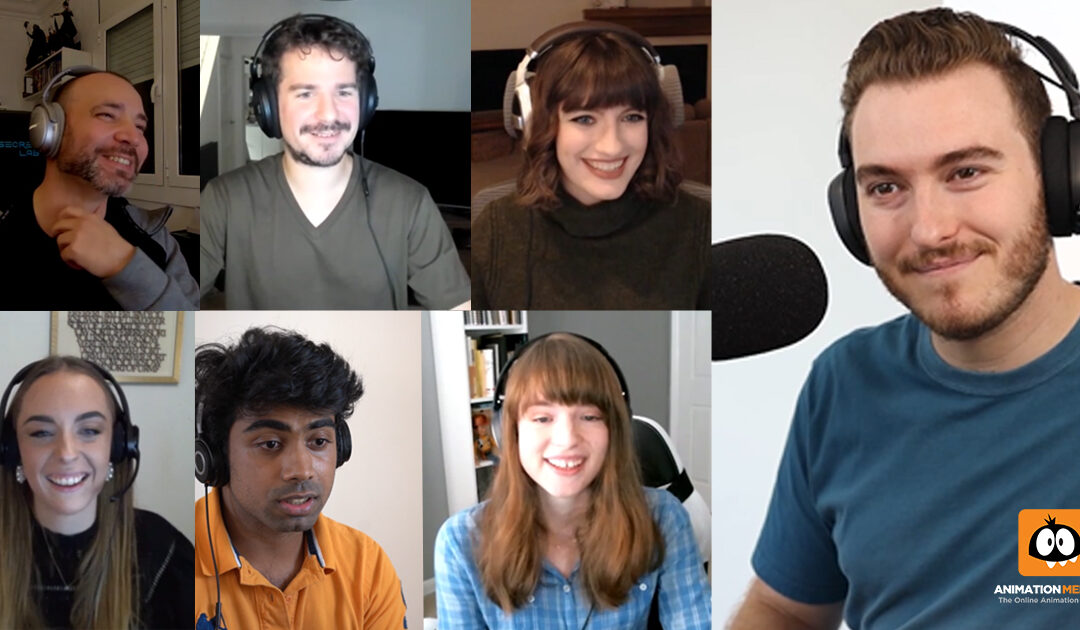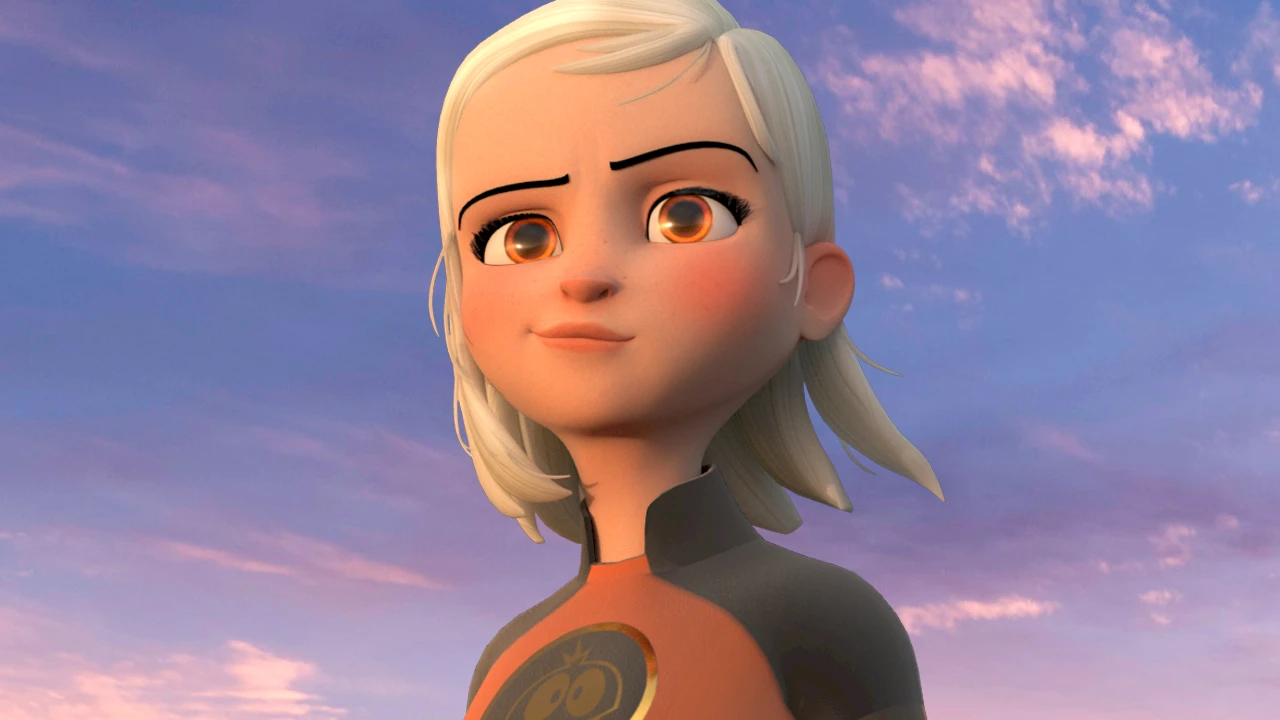Everyone in the Animation Mentor community dreams big. It’s what we do. So when one of us captures a moment to shine, it’s always a reason to celebrate. Say hello to Animation Mentor student Bruno Monteiro, who served as the Animation Director on Rio 2096: A Story of Love and Fury — winner of the Cristal Award for Best Feature at Annecy 2013. Bruno joins us to recount the experience of working on the project, share animation tips and insights, and relive the momentous occasion.
Congratulations and a big woot to you, Bruno.
— The Animation Mentor Crew
Explain how you heard about the project. Any great stories you can share?
There are so many things to write about the movie!!
The first time I got to know the project, I was working as Lead Animator in a studio in Brazil that got the invitation to produce a short test for the movie. I was in charge of creating the shot that eventually convinced the director and the producers that 2D was viable for the project. So I was the first animator to lay hands on the project. The movie has a graphic novel style mixed with anime style and even classic Disney animation style, so it was pretty intense to learn to achieve a level where we could have some shots that were much more contemplative and other shots with full animation.
A lot of people came into the project and left the project. I even quit and disconnected from the project, but not for long. The director and producer were looking for other alternatives to finish the project — and we had a super crazy phone call where I basically told them that I could finish the movie for them if I could open my own studio. Bizarre as it sounds, that’s what actually happened. I became the Animation Director of the project and reworked from scratch more than 10 minutes of animation that weren’t working. And after that, we had to face the last chapter of the movie.
The movie goes from four completely different eras — so when I got back to the project, I was in charge of the last part of the movie (the futuristic one). The director was so nice that he decided to reopen the script with some of the leads of the teams and we started to change the end of the movie. That was crazy because the time was running but the main idea of the director was to have the best history we could deliver — so we spent months just creating storyboards and writing and bringing any crazy idea to life that could make the movie better.
I will never forget that weird but great way to work on a feature film. I’ll always carry in my heart those days in which me, Luiz Bolognesi (Director/Scriptwriter), Anna Caiado (Artistic Director), Daniel Greco (Production Supervisor), Paulo Crumbim (Composite Artist), André Forni (3D Supervisor and a fellow Animation Mentor student), Helena Maura (Producer Director), and Camila Loyolla (Director Assistant) spent countless hours around a table discussing the movie and the best way to solve sequences and every little detail.
After we got the script back on track, we all rushed in to make what we knew best. So I jumped to storyboarding and character design. After those were done, it was animation time! So me and the director spent a great amount of time approving the 2D layouts and character posing that I was doing. We did this so that the animator could have a lot of good poses preapproved from the director — and that way, the animator knew the exact emotions and movements in every shot. It was pretty intense because I had to do it for all the shots while I was animating and supervising the other animators. I can’t really say how thankful I am to Buriti Filmes and Gullane for trusting me on this. Luiz Bolognesi, Caio Gullane, and Fabiano Gullane are the most fierce, crazy, and righteous people I’ve ever worked with.
What attracted you to the project?
The thing that made me want to be part of it and that made all of us artists so proud — is because the movie is about resistance. It’s a movie that talks about Brazilian history, and yet it is a universal theme that connected people all over the world. And the director, Luiz Bolognesi, was our hero. He believed in us, he was there working as hard as everyone on the project. He was injecting personal money into the project to make it happen. So he always believed we could make it. And he was always there fighting on our side!
What’s it like to work with other Animation Mentor alumni?
André Forni, another former Animation Mentor student, was taking care of 3D props and 3D layouts for the movie. We had a great time together because he wasn’t only my friend but my partner at the studio.
Anything you learned during the project? Any animation tips?
The main thing about this project was that Luiz Bolognesi, the director, came from live-action movies so he was searching for really subtle and yet not video-referenced animation. It was intense work because we had to study a lot of characters and really put ourselves into their world to bring this type of animation to the project. And as we had a super small budget, we couldn’t afford to make all the shots fully animated — so we had to develop a sense to know how much to move the character and the time to keep the character in a pose.
We studied every pose to achieve the best inner feeling from our characters. And as art imitates life and vice versa, I brought a lot of my own experiences into those complex characters. The shot that I most enjoyed crafting was a kissing shot. That wasn’t just the characters kissing. I made them kiss the way I kiss and hold and look into my wife’s eyes. So every time I see that shot, I get really full of emotions because I’m there, love is there, it’s the truth in it so you can feel the characters really connecting with each other.
Our recent Showcase put the spotlight on storytelling. Please explain your role in the project’s storytelling.
Storytelling is just everything in animation. It doesn’t matter if you craft a super crazy good shot — if the story lacks emotion or connection with the audience, people won’t really rely on animation by itself. So we had those months just polishing the script, trying to give meaning and reason to every single aspect of the movie, giving each character reasons to be and to do the things they were actually doing, and trying to avoid that Manichean world view. People are not 100% bad or good. So we went for that, we really dug into our characters’ souls in search of who they really were. And because this movie wasn’t for kids, we could use more aspects of character. And it paid off!
Explain your reaction when you learned the film won the Cristal Award at Annecy 2013.
I was there actually! I was there, sitting in a chair side by side with Luiz Bolognesi (Director/Scriptwriter), Fabiano Gullane (Producer), Anna Caiado (Artistic Director), and Daniel Greco (Production Supervisor). We couldn’t believe what we were hearing. It was the first time a Brazilian movie got selected at the competition at Annecy and we were winning?!? That just wasn’t making sense!! We went crazy and the director — as always, one of the finest men I’ve ever met in my life — led us to stage so we were there, in front of all those people in the sacred land at Annecy, receiving the Cristal Award for Best Feature. I was stunned, I was completely out of my senses. We were running against a Disney movie, a C4 movie, and other really great movies. Well, I still can’t believe it until today because I was there!!




